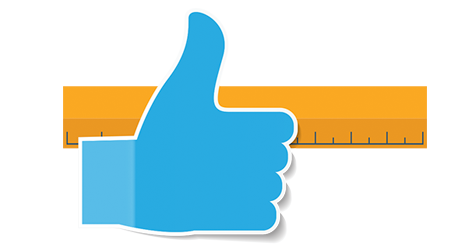
Despite the bad press, tests can play a crucial role in getting students to their learning destination. But not all testing is the same.
Tests have come under attack in recent years, and no wonder: They take lots of classroom time; students and parents get stressed out; teachers object when test scores are used in their evaluations; and, with the launch of the Common Core State Standards and similar yardsticks, it’s not always clear what state tests will be assessing. All this has sparked fierce resistance — “Less testing, more teaching” is one battle cry — and produced some less-than-ideal classroom practices, including way too much test prep.
But the criticism is mostly aimed at high-stakes standardized testing, which is only one type; more important are interim and on-the-spot assessments, which are much closer to the daily life of classrooms. My worry is that the testing-is-bad movement will keep us from seeing the ways educators can use assessments to continuously improve teaching and learning and address three troubling equity problems:
- Gaps between the intended, the taught, and the learned curriculum — for example, a high school senior who’s never heard of the Holocaust;
- Teachers who don’t take responsibility for their students’ learning — I taught it, and if they didn’t learn it, that’s on them;
- The Matthew Effect — the rich getting richer and the poor getting poorer because curriculum gaps and ineffective teaching disproportionately harm students who walk into school with any kind of disadvantage.
Why is assessment so important to meeting these challenges? Because only when teachers and principals have accurate and timely information on what students have (and haven’t) learned can they do the kind of minute-by-minute, day-by-day, month-by-month fine-tuning needed to reach all children.
Let’s look at summative, interim, and on-the-spot assessments. Each has its own methodology, timing, and research track record. Summatives are most often annual state accountability tests. Interims are given every six to eight weeks, providing data that can be put to work before students take summatives. On-the-spots allow teachers to check for understanding as they teach. All assessments can be used badly, but when used well, they can play a vital role in three areas: (a) improving learning during each lesson; (b) keeping educators and students focused on where they’re going; and (c) shifting the instructional conversation to student results.
Improving learning during each lesson
Assessment can help teachers fix learning problems in real time
As Graham Nuthall (2004) puts it, “At the heart of the problem that teachers face in the classroom is knowing what is going on in the minds of the students” (p. 295). On-the-spot checks for understanding (often called formative assessments) address this challenge and have a robust research track record (Hattie, 2009). But not all check-ins are created equal. Some teachers believe students’ facial expressions are an accurate sign of comprehension, not reckoning with “compliant pretenders.” Teacher questions like, “Is everyone with me?” often fail to uncover embarrassed confusion, willful evasion, and daydreaming. Grant Wiggins (2006) spotlighted the equity problem with ineffective checks for understanding, noting that “The more you teach without finding out who understands the information and who doesn’t, the greater the likelihood that only already-proficient students will succeed” (p. 50).
Fortunately, more and more teachers are using methods that give them an accurate sense of the entire class’s level of mastery and inform next moves:
- Every student displaying answers to well-framed questions on small dry-erase boards;
- Students signaling answers to multiple-choice questions with colored cards orPlickers, QR cards that students hold up and teachers scan with an app;
- Using wireless response devices (clickers) or students’ smartphones to get responses;
- Conducting quick-writes with the teacher walking around looking over students’ shoulders;
- Think-pair-share, with all students discussing with an elbow partner before sharing out;
- Randomly calling on students using popsicle sticks or smartboard apps;
- Having students respond to a summing-up question and submit an exit ticket at the end of a class.
Dylan Wiliam (2007) has this galvanizing message about the importance of on-the-spot assessments: “If students left the classroom before teachers have made adjustments to their teaching on the basis of what they have learned about the students’ achievement, then they are already playing catch-up. If teachers do not make adjustments before students come back the next day, it is probably too late” (p. 191).
For on-the-spot assessments to work, several elements must be in place: (a) effective initial teaching; (b) questions that tap students’ understanding and don’t let them get the right answers for the wrong reasons; (c) a way to quickly get responses from all students (or from a representative sampling); and (d) immediate use of the information to clarify, reteach, provide more practice, extend, or move on. Teachers who aren’t aware of the power of on-the-spot assessments need a refresher workshop, and principals should constantly monitor the use of these assessments in classroom visits.
Assessments improve retention through the “retrieval effect”
If you’ve ever forgotten where you parked your car in a large garage, you’ve experienced a retrieval failure; you were confident you would remember the clearly marked location, but when you needed it a few hours later, you couldn’t retrieve that information — or your car. Students may feel sure they’ll remember what they studied at home, only to find they can’t access important details when the teacher calls on them or they take a test.
Recent research by cognitive scientists tells us why a time-honored study technique — reading, rereading, and highlighting a textbook chapter — is not particularly effective. Much better is reading the chapter, closing the book, and writing down as much as you can remember. This alerts you to what you were confident you would remember but don’t; it prompts you to go back and fill those gaps; and, most important, it strengthens what you remember. “Retrieving a fact is not like opening a computer file,” says Henry Roediger III (2014), one of the pioneers in this research. “It alters what we remember and changes how we subsequently organize that knowledge in our brain.”
Retrieval practice works best when we test ourselves within a half hour of learning something and then repeat the retrieval process at widening intervals — a day later, a week later, a month later — to embed the information in long-term memory. Effective teachers orchestrate spaced, cumulative reviews, and they explicitly teach their students about the retrieval effect so they understand how to study better on their own.
Assessments can be used to leverage peer instruction.
Harvard professor Eric Mazur (1997) uses the following technique in his 180-student physics classes: Having explained a concept, he puts a multiple-choice question on the screen and asks students to choose an answer via clickers. He displays a bar graph of the responses (without telling which is correct). If 30-70 percent of students choose wrong answers, he says, “Convince your neighbor” and walks around listening to the dialogues. Mazur then re-polls the students; almost invariably, the number of correct responses increases dramatically — a sign that he successfully enlisted the help of scores of peer tutors. After some helpful clarifications, he moves on, using this teaching-checking-peer-instruction-clarification cycle several times during each 50-minute class.
In Mazur’s classes, student engagement is high, and misunderstandings and misconceptions are dealt with immediately. Using this method, Mazur became an even better teacher; course learning results steadily improved, and female students did better than before and were more likely to take other STEM courses. Mazur believes the key to all this is using assessments to orchestrate peer instruction.
Keeping educators and students focused on where they’re going
Assessments can foster a growth mindset.
Classroom tests can trigger in students a fixed mindset about ability — I got an A; I’m a genius. I got an F; I stink at math. Carol Dweck (2006) and her colleagues have shown that students with a fixed mindset about intelligence (positive or negative) tend to avoid challenges, give up easily, see effort as fruitless, ignore useful criticisms, and feel threatened by the success of others. But classroom tests are an opportunity to shift them to a growth mindset — if teachers choose their words carefully. Introducing a test by saying, “This test is to see how smart you are” activates a fixed mindset, while saying, “This is to see how much you’ve learned” activates a growth mindset. After a test, praising students for hard work, effective strategies, and tenacity produces better results down the road; praising them for being “smart” does the opposite.
Students need to think of their brain as a muscle that gets stronger with deliberate and strategic practice; this motivates them to work in far more productive ways. Students with a growth mindset are more likely to embrace challenges, persist in the face of failure, see effort as the path to mastery, learn from setbacks and criticism, and find lessons and inspiration in the successes of others.
Assessments can generate helpful graphic displays.
Tests produce detailed information on student learning, and data displays can help students, teachers, and school leaders track progress, identify weak areas in the curriculum and test items, diagnose learning problems, set goals, and celebrate success. Some examples: a principal’s wall chart of students’ reading levels; a graph of progress in quarterly writing assessments; a spreadsheet highlighting items that most students got wrong on a math test, along with the most common incorrect answers. Well-constructed graphic displays can motivate students, inform teacher team discussions, and give administrators and instructional coaches key insights to support teachers’ work.
Assessments help students monitor their own learning.
Putting data in students’ hands empowers them to take responsibility for their work, preparing them for situations where there won’t be a teacher to explain what to do next. Working with assessment results helps students think like assessors, measure progress toward goals, zero in on weak areas, recognize a fixed and growth mindset, and understand retrieval practice. The ideal learning climate, says John Hattie (2009), is “When teachers see learning through the eyes of the student; when students see themselves as their own teachers” (p. 238).
Shifting the instructional conversation to student learning results
Assessments provide substance for teacher collaboration.
Meetings of same-grade/same-subject teams to dig into the results of common tests, essays, and performance tasks can be a powerful venue for improving teaching and learning when teachers have detailed, timely data and trust each other enough to be open about teaching failures (“Your kids did better on this than mine. What did you do?”). Richard DuFour et al. (2008) pointed to the importance of teacher teams using data to fix student learning problems and continuously reflect on their teaching methods. In the widely used Response to Intervention (RTI) process, assessments are the essential pivot as teachers make decisions about students who need Tier 2 and Tier 3 instruction.
Some researchers say interim tests have been overemphasized and argue that on-the-spot assessments should be the main focus of school-level professional development. Others say that interims have essentially become summative tests — teach, test, and move on. On-the-spot assessments have a better research track record, but this may be because interim assessments are often implemented poorly. Done well, interim assessments are an ideal complement to on-the-spot assessments. They:
- Challenge students to remember and apply knowledge and skills over time and in a more formal and rigorous context.
- Build students’ test familiarity and confidence;
- Keep teachers on the same page with curriculum content, rigor, and pacing, which allows for better communication about common challenges and successes;
- Allow teachers to graphically display student results from a class, grade, or course; and identify effective classroom practices, pinpoint specific areas of student confusion and error, and determine what interventions are needed for which students;
- Make assessments visible to principals so they can cross-pollinate ideas among teacher teams, supervise teachers with greater insight, and help teachers pinpoint specific areas of student confusion and error.
But these benefits will occur only if several key conditions are in place: high-quality interim tests, time for teachers to analyze them, an adult culture of humility and collegial learning, and systematic follow-up with students who aren’t yet successful. The ideal dynamic is a balance of common curriculum goals and assessments, teacher autonomy and creativity around instructional methods, constant experimentation with new ideas in classrooms, and an ethos of seizing on the best ideas and spreading them to all teachers on the team.
The trick for school leaders is to turn down the accountability pressure and join with teachers in looking at assessment results with a curious, problem-solving frame of mind.
Assessments help school leaders supervise with an eye to learning.
Recent attempts to evaluate teachers by their students’ test scores (driven by value-added methodology and Race to the Top funding) have been largely discredited and are making their way into the dustbin of history. But advocates of test-based accountability had a point: Student learning must be part of the conversation. Assessment results can powerfully inform continuous improvement by providing evidence of effective instruction and highlighting teaching practices that should be replicated, as well as pinpointing teaching gaps and ineffective practices that need to be fixed.
The trick for school leaders is to turn down the accountability pressure and join with teachers in looking at assessment results with a curious, problem-solving frame of mind. Principals have opportunities to discuss evidence of learning every day: checking in with students during classroom visits (“What are you learning today?”); chatting with teachers after classroom visits about intended and actual outcomes; looking at exit tickets and other on-the-spot assessments; sitting with teacher teams as they plan curriculum units and analyze student work and test data, and getting reports from teacher teams on before-and-after evidence of learning throughout the year.
These conversations should be about coaching, not an officious attempt to judge teachers. “The best leaders,” says Douglas Reeves, “will use assessment results not as a hammer to embarrass teachers, but as a lever to prod even the best and most experienced to improve their practices” (personal communication). Legendary UCLA basketball coach (and former Indiana English teacher) John Wooden said, “Don’t look for big, quick improvement. See the small improvement one day at a time. That’s the only way it happens. And when it happens, it lasts” (as quoted in Gallimore & Tharp, 2004, p. 120).
Assessments can prevent knowledge and skill gaps.
When I taught 6th graders in Boston several decades ago, there were no state tests, and I had the freedom to cover some really cool stuff, including the Kennedy assassination, Angela Davis, and the Bermuda Triangle. I had fun, and my students were engaged, but schools with this laissez-faire approach to curriculum tend to produce inequitable outcomes: Disadvantaged students emerge with lots of gaps in knowledge and skills while advantaged students pick up what’s not taught in school in their homes and communities.
In the late 1990s, Massachusetts dealt with curriculum anarchy by implementing what Robert Marzano et al. (2005, p. 83) calls a “guaranteed and viable curriculum,” accompanied by rigorous tests to make sure all students were learning the right stuff. I was a Boston principal at this point, and my colleagues and I felt a real sense of urgency: Our students would not get high school diplomas unless they were on track with the new expectations. What gets tested gets taught. External tests helped us create a coherent K-5 curriculum in our school and bring about major improvements in student learning.
This was all part of an explicit social compact: In return for increased funding, schools accepted responsibility for ensuring that students would move through the grades with the skills and knowledge they needed to be well-educated graduates. There was also a compact at the classroom level: If you’re teaching 6th grade, what you teach is nonnegotiable, but how you teach it is up to you — subject, of course, to solid assessment evidence that students are learning.
The steps that Massachusetts took with curriculum, testing, and financial support produced the highest student achievement in the United States, on par with some of the most successful nations around the world. The road map for success is clear: a well-thought-out K-12 progression of knowledge and skills, high-quality tests that don’t consume too much time, prompt and helpful data on students’ progress and effective instructional practices, and lots of room for creativity at the school and classroom level.
My worry is that the testing-is-bad movement will keep us from seeing the ways educators can use assessments to continuously improve teaching and learning.
Becoming assessment literate
In sum, there are legitimate concerns about the way tests are being misused, and those need to be addressed. But let’s not be distracted from the big picture: The wise and effective use of assessments is essential to solving inequities within and among our schools. Used well, assessments help teachers improve learning in real time, keep educators and students focused on where they are within a coherent K-12 curriculum, and shift the daily instructional conversation to results. Used well, assessments foster a growth mindset, generate helpful data displays, and get students to take responsibility for their own learning. Used well, assessments are the key to effective teacher collaboration, allow principals to supervise with a constant eye on student learning, and fuel a process of continuous improvement.
Let’s use assessments so that all students have the skills, knowledge, and habits of mind to enter adulthood as well-educated, responsible citizens — who can sit down with any challenging test and say, “I’ve got this.”
References
DuFour, R., DuFour, R., & Eaker, R. (2008). Revisiting professional learning communities at work. Bloomington, IN: Solution Tree, 2008.
Dweck, C. (2006). Mindset. New York, NY: Ballantine.
Gallimore, R. & Tharp, R. (2004). What a coach can teach a teacher, 1975-2004: Reflections and reanalysis of John Wooden’s teaching practices. The Sports Psychologist, 18, 119-137.
Hattie, J. (2009). Visible learning. New York, NY: Routledge.
Marzano, R., Waters, T., & McNulty, B. (2005). School leadership that works. Alexandria, VA: ASCD.
Mazur, E. (1997). Peer instruction. Upper Saddle River, NJ: Prentice Hall.
Nuthall, G. (2004). Relating classroom teaching to students’ learning: A critical analysis of why research has failed to bridge the theory-practice gap. Harvard Educational Review, 74 (3), 273-306.
Roediger, H., III. (2014, July 20). How tests make us smarter. The New York Times, p. SR12.
Wiggins, G. (2006, April/May). Healthier testing made easy. Edutopia.
Wiliam, D. (2007). Content then process: Formative assessment in teacher learning Communities. In D. Reeves (Ed.), Ahead of the curve: The power of assessment to transform teaching and learning (pp. 183-206). Bloomington, IN: Solution Tree.
Originally published in March 2018 Phi Delta Kappan 99 (6), 54-59. © 2018 Phi Delta Kappa International. All rights reserved.
ABOUT THE AUTHOR

Kim Marshall
Kim Marshall, formerly a Boston teacher and administrator, now coaches principals, consults, and speaks on school leadership and evaluation, and publishes the weekly Marshall Memo. He is the author of Rethinking Teacher Supervision and Evaluation (3rd ed., Jossey-Bass, August 2024).
Visit their website at: www.marshallmemo.com









